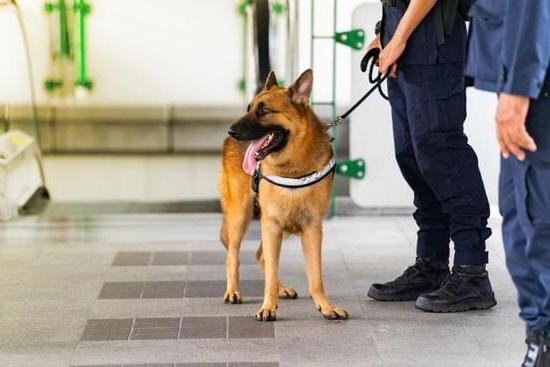Crate training is a valuable tool for pet owners, especially when it comes to dachshunds. In this article, we will explore how to crate train a wiener dog effectively. Crate training provides a safe and comfortable space for your furry friend, aiding in their overall well-being and development. It also helps in housebreaking, managing separation anxiety, and providing security for your dachshund.
Dachshunds, or wiener dogs as they are affectionately known, have unique characteristics that make crate training essential. Understanding the benefits of crate training for dachshunds can make the process smoother and more successful. By creating a positive association with the crate, you can ensure that your wiener dog feels secure and content while using it.
From choosing the right crate size to establishing a routine, each aspect of crate training plays a crucial role in helping your dachshund adapt comfortably. In the following sections, we will delve into tips on setting up the crate, introducing your wiener dog to it gradually, and addressing common challenges that may arise during the training process. With patience, consistency, and positive reinforcement techniques, you can achieve successful crate training for your dachshund.
Choosing the Right Crate Size for Your Wiener Dog
When it comes to crate training a wiener dog, one of the most important aspects to consider is choosing the right crate size for your furry companion. The crate should provide a comfortable and safe space for your dachshund while also allowing them enough room to move around easily. It’s essential to select a crate that is just the right size – not too big, not too small.
Measuring Your Wiener Dog for the Perfect Crate Size
To determine the appropriate crate size for your dachshund, you’ll need to take some measurements. Start by measuring your dog’s length from the tip of their nose to the base of their tail, then add a few inches to allow them enough space to turn around comfortably.
Next, measure their height from the top of their head to the ground and add a couple of inches for headroom. These measurements will help you choose a crate that is appropriately sized for your wiener dog.
Choosing the Right Type of Crate for Your Dachshund
There are various types of crates available on the market, including wire crates, plastic crates, and collapsible fabric crates. Consider your dachshund’s personality and preferences when selecting a crate. Some dogs may prefer the visibility and airflow of wire crates, while others may feel more secure in an enclosed plastic crate. Whichever type you choose, ensure that it meets safety standards and provides adequate ventilation and security for your wiener dog.
Tips for Ensuring Comfort and Security in the Crate
Once you have chosen the right size and type of crate for your dachshund, it’s essential to make their new space as comfortable and inviting as possible. Add soft bedding or blankets inside the crate for warmth and create a positive association with the crate by rewarding your wiener dog with treats or praise when they enter willingly.
Avoid using the crate as a form of punishment, as this can lead to negative associations with confinement. With the proper crate size and setup, your furry friend will feel safe and secure during their training journey.
Setting Up the Crate in the Ideal Location at Home
When it comes to crate training a wiener dog, one of the crucial steps is setting up the crate in the ideal location at home. This not only enhances the comfort and security of your dachshund but also plays a significant role in the success of the training process. By choosing the right spot for your wiener dog’s crate, you can create a positive association with the space and aid in their overall adjustment to being confined when necessary.
Choosing a Quiet and Comfortable Area
Selecting a quiet and comfortable area within your home is essential when setting up the crate for your dachshund. Avoid high-traffic areas or places with loud noises that may cause stress or anxiety for your pup. Opt for a spot where your wiener dog can still feel like they are part of the family, even when in their crate.
Ensuring Proper Ventilation and Temperature Control
Another important factor to consider is ventilation and temperature control in the chosen location for the crate. Make sure there is adequate airflow around the crate to prevent overheating, especially during warmer months. Additionally, ensure that the area is not too drafty during colder seasons to keep your dachshund comfortable while inside their crate.
Creating a Safe and Secure Environment
Lastly, it’s crucial to create a safe and secure environment around the crate. Remove any potential hazards or choking hazards from nearby areas to prevent accidents or injuries.
Providing some toys or familiar items inside the crate can also help make it a more inviting and comforting space for your wiener dog as they adjust to being confined. By carefully selecting an ideal location for your dachshund’s crate, you can set them up for success in their crate training journey while ensuring their safety and well-being are prioritized.
Introducing Your Dachshund to the Crate
When it comes to crate training a wiener dog, the process of introducing your furry friend to the crate can have a significant impact on their overall comfort and acceptance of this training method. Here are some step-by-step guidelines on how to properly introduce your dachshund to their new crate:
- In the beginning, place the crate in an area of your home where your wiener dog spends most of their time. This will help them slowly adjust to the presence of the crate without feeling isolated or anxious. You can start by leaving the door open and enticing them to explore it with treats or their favorite toys.
- Once your dachshund shows some interest in the crate, encourage them to go inside by placing treats or their bedding inside. Let them explore and sniff around at their own pace, without any pressure or forcing them into it. Make sure to praise and reward them when they enter voluntarily.
- To further familiarize your wiener dog with the crate, consider feeding them their meals inside it with the door open. This will create positive associations with the crate as a safe and comfortable space. Gradually increase the amount of time they spend inside while eating before closing the door for short periods, always rewarding good behavior.
- When closing the door for the first few times, do so for only a few minutes at a time while staying close by to reassure your dachshund that they are not alone. Slowly increase the duration of time they spend in the closed crate, always making sure that they are comfortable and relaxed before letting them out.
By following these steps and being patient and consistent in your approach, you can effectively introduce your dachshund to their crate in a positive way that sets a solid foundation for successful crate training in the future. Remember that every dog is unique, so adapt these guidelines based on your wiener dog’s individual personality and needs.
The Do’s and Don’ts of Crate Training a Wiener Dog
Crate training a wiener dog can be an effective way to provide them with a safe and comfortable space while also helping in their overall behavior and potty training. However, there are certain do’s and don’ts that you should keep in mind to make the process successful.
One of the most important “do’s” of crate training a wiener dog is to make the crate a positive space for them. You can achieve this by placing their favorite toys, blankets, and treats inside the crate to encourage them to go in willingly. It’s also essential to praise and reward your dachshund whenever they enter the crate on their own or stay calm while inside.
On the other hand, one of the key “don’ts” of crate training is to never use the crate as a form of punishment. Your wiener dog should associate the crate with security and comfort, not as a place where they are isolated or disciplined. Avoid forcing them into the crate or leaving them inside for extended periods beyond what they can tolerate comfortably.
When looking at how to crate train a wiener dog, consistency is key. Stick to a routine when it comes to using the crate for meals, naps, bedtime, and when you need to leave them alone at home. By maintaining a consistent schedule, your dachshund will learn to anticipate when it’s time to go into their crate, making the training process smoother for both of you.
| Do’s | Don’ts |
|---|---|
| Make the crate a positive space | Avoid using the crate as punishment |
| Praise and reward when entering voluntarily | Avoid forcing your dachshund into the crate |
| Maintain a consistent routine | Avoid leaving them inside for extended periods |
Establishing a Crate Training Routine for Success
Crate training is an essential tool for pet owners to help their dachshunds feel secure and comfortable in their own space. Establishing a crate training routine is crucial for success in ensuring your wiener dog adjusts well to this method of training. Here are some tips and guidelines on how to create a successful crate training routine for your furry friend:
- Consistency is key: Consistency is crucial when establishing a crate training routine for your dachshund. Set a schedule for feeding, potty breaks, exercise, and crate time to help your wiener dog understand and follow a routine.
- Gradual introduction: Start by introducing your dachshund to the crate slowly and positively. Place treats or toys inside the crate to encourage your wiener dog to explore and associate the crate with positive experiences.
- Positive reinforcement: Use positive reinforcement techniques such as praise, treats, or toys when your dachshund enters the crate voluntarily or behaves well inside it. This will help reinforce good behavior and create a positive association with the crate.
Creating a safe and comfortable environment inside the crate is also important in establishing a successful crate training routine. Make sure to provide soft bedding, water, and toys to keep your wiener dog occupied and comfortable while inside the crate. Remember that patience, consistency, and positive reinforcement are key elements in successfully crate training your dachshund. With time and dedication, your pet will learn to love its crate as its safe place at home.
Once you have established a consistent routine for crate training your wiener dog, you will notice improvements in their behavior and overall well-being. Following these tips and guidelines on how to crate train a dachshund will ensure that both you and your furry friend have a positive experience throughout the training process. Remember to be patient, stay consistent, and always use positive reinforcement to make the crate training experience enjoyable for both you and your beloved dachshund.
Addressing Common Challenges and Roadblocks in Crate Training Dachshunds
Crate training a Dachshund, also known as a wiener dog, can come with its own set of challenges and roadblocks. While some dogs may take to crate training quickly and easily, others may need more time and patience to adjust to this new routine. It’s important for pet owners to be prepared for these challenges and have strategies in place to address them effectively.
One common challenge that many Dachshund owners face when crate training their furry companions is separation anxiety. Dachshunds are known to be loyal and affectionate dogs who form strong bonds with their owners.
As a result, being separated from their human family members can trigger anxiety and distress in these dogs. To help your Dachshund overcome separation anxiety during crate training, it’s essential to gradually increase the amount of time they spend in the crate, starting with short periods and gradually building up to longer stretches of time.
Another common roadblock in crate training Dachshunds is resistance or fear of the crate itself. Some dogs may feel anxious or afraid when placed inside the crate, which can lead to whining, barking, or attempts to escape. To address this issue, it’s important to create a positive association with the crate by providing treats, toys, and praise whenever your Dachshund enters the crate voluntarily.
Additionally, you can try leaving the door open initially so that your dog can explore the space at their own pace without feeling trapped. With patience and consistency, most Dachshunds can learn to see their crate as a safe and comfortable den-like space.
Overall, addressing common challenges and roadblocks in crate training Dachshunds requires understanding your dog’s individual needs and behaviors. By observing your Dachshund’s reactions and adjusting your training approach accordingly, you can help them overcome any obstacles they may face during the crate training process. Remember that every dog is unique, so it’s important to be flexible and adaptable in your methods while staying consistent with positive reinforcement techniques for successful crate training outcomes.
Gradual Transition
After successfully crate training your wiener dog, the next step is transitioning them from being confined to their crate to having more freedom around the house. This gradual transition is crucial to ensure that your Dachshund can be trusted to roam freely without causing any mischief or accidents. The key is to slowly increase their time out of the crate while still providing boundaries and supervision.
One effective way to start this transition is by allowing your wiener dog short periods of supervised free roaming in a safe, enclosed area of the house. This could be a designated room or a specific area where they are less likely to get into trouble. By gradually increasing their freedom in this controlled environment, you can observe their behavior and make corrections as needed before giving them even more freedom.
It’s important to continue using positive reinforcement during this transition period, rewarding good behavior and redirecting any undesirable actions. Make sure to still provide your Dachshund with plenty of mental and physical stimulation through playtime, walks, and exercise even when they are out of the crate. This will help prevent boredom and reduce the likelihood of destructive behavior. With patience, consistency, and proper supervision, you can successfully move from crate training to free roaming with your wiener dog.
Celebrating Milestones
Crate training a wiener dog can be a rewarding and effective way to ensure your furry friend feels safe, secure, and at ease in their own space. Celebrating milestones in the crate training process is crucial to reinforce positive behavior and build a strong bond between you and your dachshund. By incorporating reward-based training and positive reinforcement techniques, you can encourage your wiener dog to view their crate as a comforting retreat rather than a place of confinement.
One of the key aspects of celebrating milestones in crate training is to use rewards such as treats, toys, or verbal praise when your dachshund exhibits desirable behavior. This can include voluntarily entering the crate, staying calm inside for extended periods, or refraining from whining or barking. By associating positive experiences with the crate, your wiener dog will be more motivated to engage in the training process willingly.
Additionally, it’s important to be consistent in your approach and avoid using the crate as a form of punishment. While crate training can help with housebreaking and providing structure for your dachshund, it should never be used as a means of isolation or discipline.
By maintaining a positive and supportive attitude throughout the training process, you can foster trust and communication with your wiener dog while promoting a sense of security in their crate. In conclusion, celebrating milestones with reward-based training and positive reinforcement techniques is essential for creating a successful and fulfilling crate training experience for both you and your beloved dachshund.
Frequently Asked Questions
Are Dachshunds Hard to Crate Train?
Dachshunds can be challenging to crate train due to their stubborn nature and strong will. It requires patience, consistency, and positive reinforcement to successfully crate train a Dachshund.
How Do You Crate Train an Adult Dachshund?
Crate training an adult Dachshund involves gradually introducing the crate as a positive space, using treats and praise to encourage them to enter willingly. It’s important to start slow and make the crate a comfortable environment for them.
Why Won’t My Dachshund Stop Crying in His Crate?
If your Dachshund won’t stop crying in his crate, it could be due to separation anxiety, discomfort, or feeling lonely. Try making the crate more inviting with blankets or toys, and gradually increase the time they spend inside to help them adjust. Consistency is key in addressing this behavior.

Welcome to the blog! I am a professional dog trainer and have been working with dogs for many years. In this blog, I will be discussing various topics related to dog training, including tips, tricks, and advice. I hope you find this information helpful and informative. Thanks for reading!





